You’d have to have a heart of stone not to be moved by the little streets of Paris, the palaces of Vienna, or the twisting canals of Venice. After all, there’s a reason these iconic cities are as timeless and as popular as they are.
But Europe is more than just these well-known destinations. These cities may be the ones on the postcards, or the ones you’ll see plastered over everyone’s Facebook vacation photo albums, but some of Europe’s most beautiful and exciting cities are often also some of the continent’s smallest or most unassuming. If you’ve done the big ones before—or even if you just have a few days to spare while visiting a major hub—then enough can’t be said for the experience of hopping onto a train, bus, or ferry and taking a short trip to somewhere really new.
For example, while visiting London, why not take a day or two to visit the medieval city of Bruges? Just a few hours away by Eurostar, Bruges is a quiet, lovely city of canals and cobblestone streets (not to mention the city’s famous belfry). Similarly, Poland’s Szczecin is a beloved waterfront city that’s just a quick, two-hour train trip from Berlin. Bratislava, the charming capital of Slovakia, isn’t as popular a destination as Vienna, but it’s an easy day trip from the famous Austrian metropolis (only an hour away by train) and is a perfect home base for wine-tasting expeditions in the surrounding countryside.
All of the European detours listed here are easy, convenient trips: just a few hours away from a major city via affordable mass transit. (No private drivers or even car rentals necessary.) But, perhaps more importantly, all of the cities included—few of which get the attention they deserve—offer intrepid travelers the chance to have a unique, under-the-radar European experience.
Munich to Salzburg, Austria
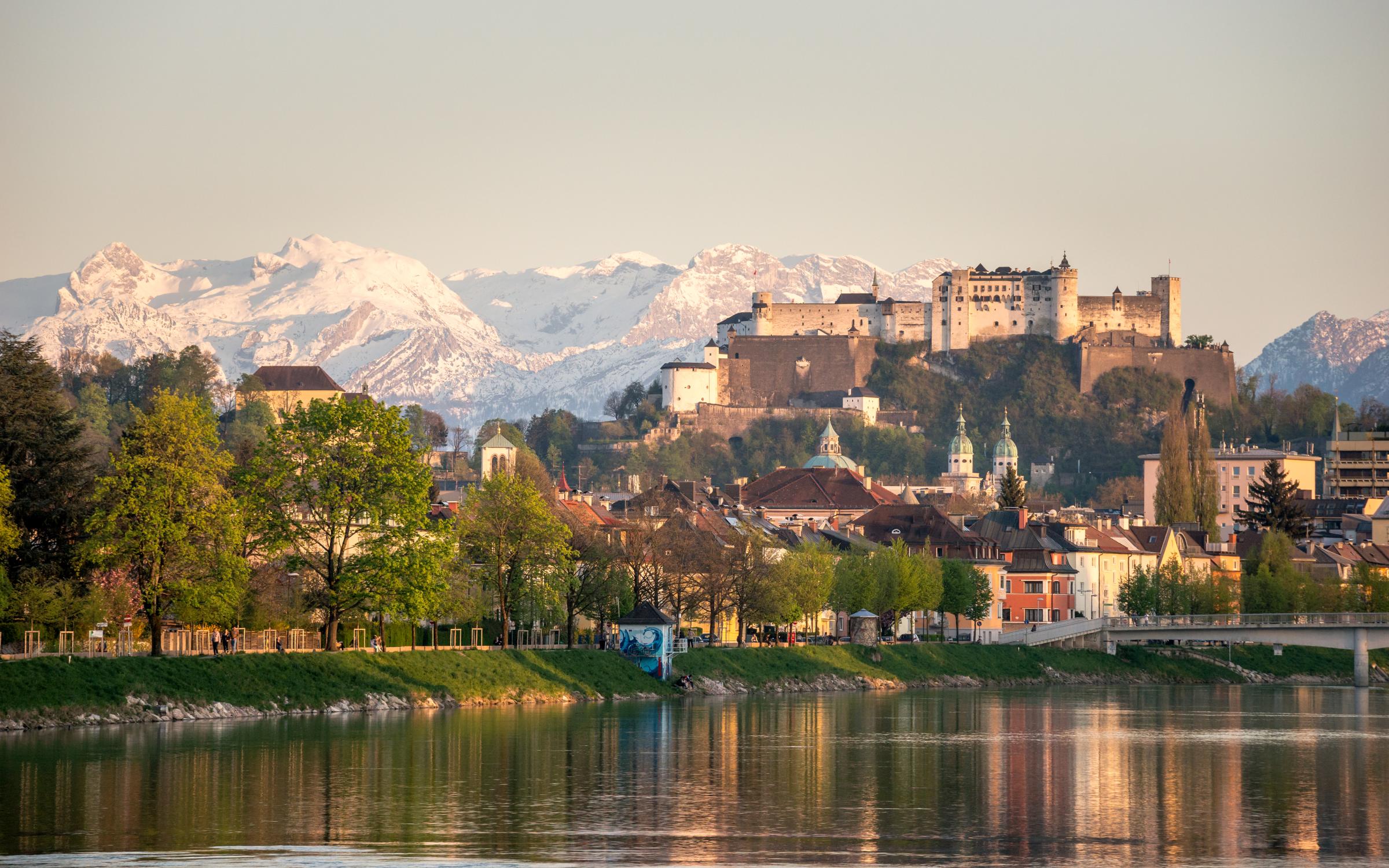
Perhaps most famous for being the birthplace of Mozart (as well as the setting for The Sound of Music), Salzburg lies just on the border with Germany. A fully preserved embodiment of Baroque architecture, few modern buildings have been allowed a place in the inner city, meaning it today looks almost the same as it did four hundred years ago. In more ways than one, Salzburg is as Austrian as Austria gets.
The Route: The Munich to Salzburg route is a quick cross-border train journey: prices range from $20 each way and it’ll take you an hour and a half to get there. If you opt for the bus (go for Flixbus) it’ll cost $8 each way with a journey time of two hours.
Where to Stay: If you’re in Salzburg, you want historical luxury, and if you want historical luxury, you want Hotel Schloss. The hotel (which served as the filming location for the von Trapp family residence in The Sound of Music) is set inside a stunning 18th-century palace with a beautiful interior and remarkable surroundings.
Where to Eat: It’s no palace, sure, but S’Kloane Brauhaus serves classic, rustic Austrian cuisine (wiener schnitzel, venison stew) and home-brewed beer in a warm, traditionally decorated environment.
What to Do: Take a Sound of Music tour, or visit the birthplace of Mozart, which is now a museum. Or just head down to the Alter Market and dedicate your day to eating as much Austrian street food as you can.
Berlin to Szczecin, Poland
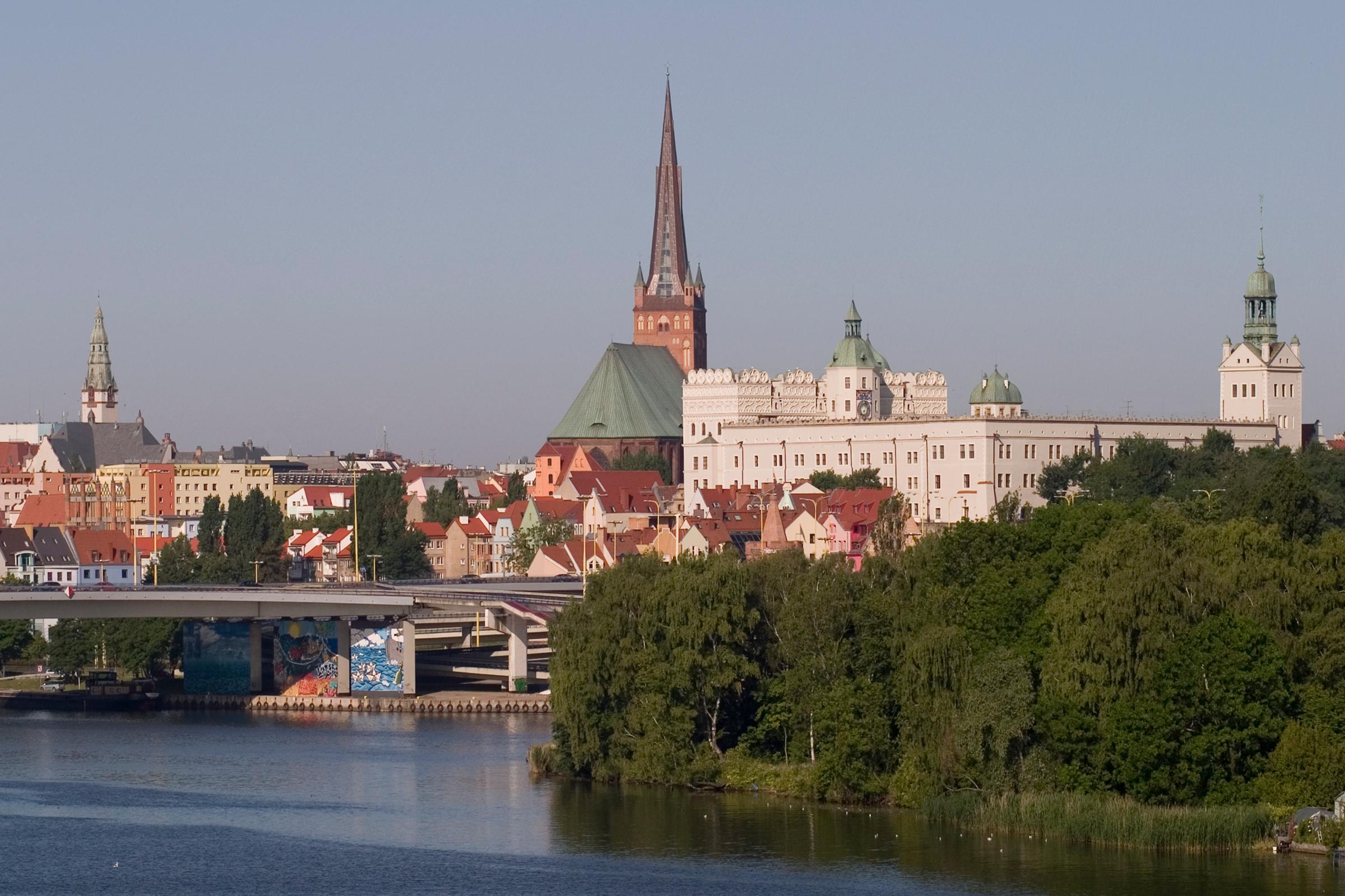
As the country’s seventh-largest city, Szczecin often finds itself in the shadow of some of Poland’s more popular destinations, such as Warsaw or Kraków. Nonetheless, this port city (located just on the Poland-Germany border) is as well loved by German tourists as it is by locals, chiefly for its gorgeous riverfront and locally made beer and vodka.
The Route: Luckily, Szczecin is as easy to get to as it is hard to spell. You can catch a train from Berlin’s Gessundbrunnen rail station straight into central Szczecin for about $75 round-trip, and you’ll arrive in well under two hours.
Where to Stay: The Park Hotel is a little slice of luxury situated right in the middle of Szczecin’s Old Town, only a short distance away from pretty much everything in the city worth seeing (including that aforementioned riverfront).
Where to Eat: You won’t have to go far for this one—the Park Hotel’s restaurant is one of the highest-rated in the city, and offers up a range of Polish and international dishes.
What to Do: The Szczecin Philharmonic hosts a number of events through the year, and the striking building itself is a wonderful example of Poland’s architectural eccentricity.
Paris to Luxembourg City, Luxembourg

One of Europe’s smallest capital cities (in one of Europe’s smallest countries), Luxembourg City is known as the “Gibraltar of the North” for its vast series of medieval fortifications.
The Route: The high-speed train will get you there from Paris in just two hours, with one-way fares starting at $27.
Where to Stay: Effortlessly stylish yet also undeniably cozy, the Hotel Parc Beaux Arts is made up of rooms that feel like they’ve been lifted straight out of a charming, local cottage, and is located near the Palais Grand Ducal in Luxembourg’s historical city center.
Where to Eat: Take advantage of the country’s unique gastronomic culture with traditional Luxembourgian fare (think beer-braised pig’s trotters and sauerkraut) at Mousel’s Cantine—and don’t forget to try the local beer.
What to Do: The Bock casemates are a series of tunnels, running beneath the ruins of the old city fortifications, that lead out to large, cliff-side openings that offer not only some of the best panoramic views in Luxembourg, but also a fascinating look into the city’s history.
Venice to Pula, Croatia
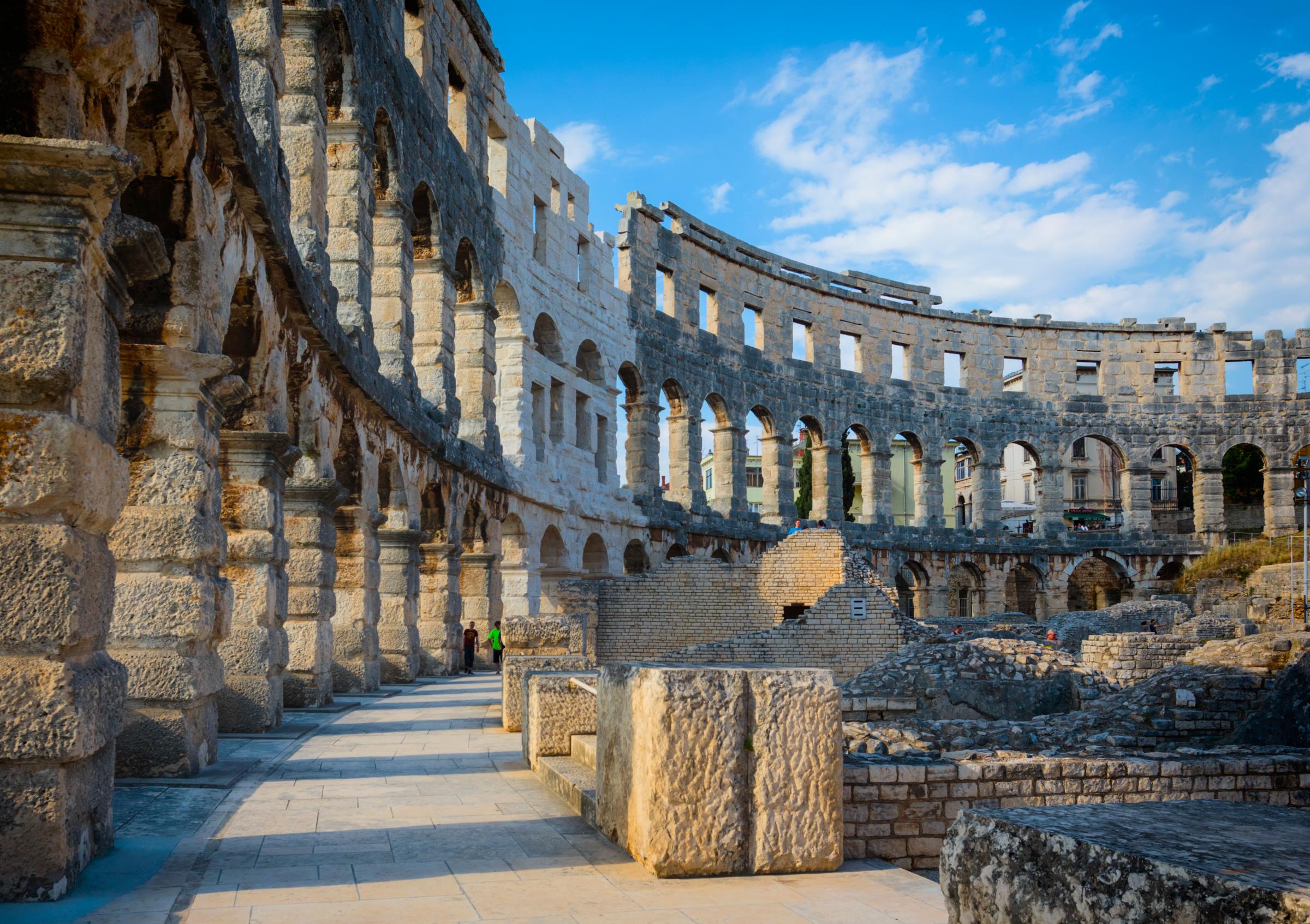
An ancient city full of Roman ruins, Pula is still flourishing thanks to the same industries that put it on the map over 2,000 years ago: winemaking, fishing and leisure.
The Route: Ferries to Pula are seasonal; they only run from April–June and during September and October. During those months, Venezia Ferries will take you across the Adriatic in just over three hours, at $120 round-trip.
Where to Stay: Villa Vulin, which sits on the city’s southern coast, provides a touch of classic Roman opulence.
Where to Eat: The charming Restaurant Oaza serves up locally sourced seafood (a specialty in Pula) and traditional Croatian dishes.
What to Do: History buffs, take note: the city’s many Roman ruins are a must-visit, especially the massive Pula Arena, Temple of Augustus, and Triumphal Arch. Visitors should also head down to the waterfront paths that lead out of town to try to find some of the many dinosaur footprints that are still preserved in the rocks today.
London to Bruges, Belgium
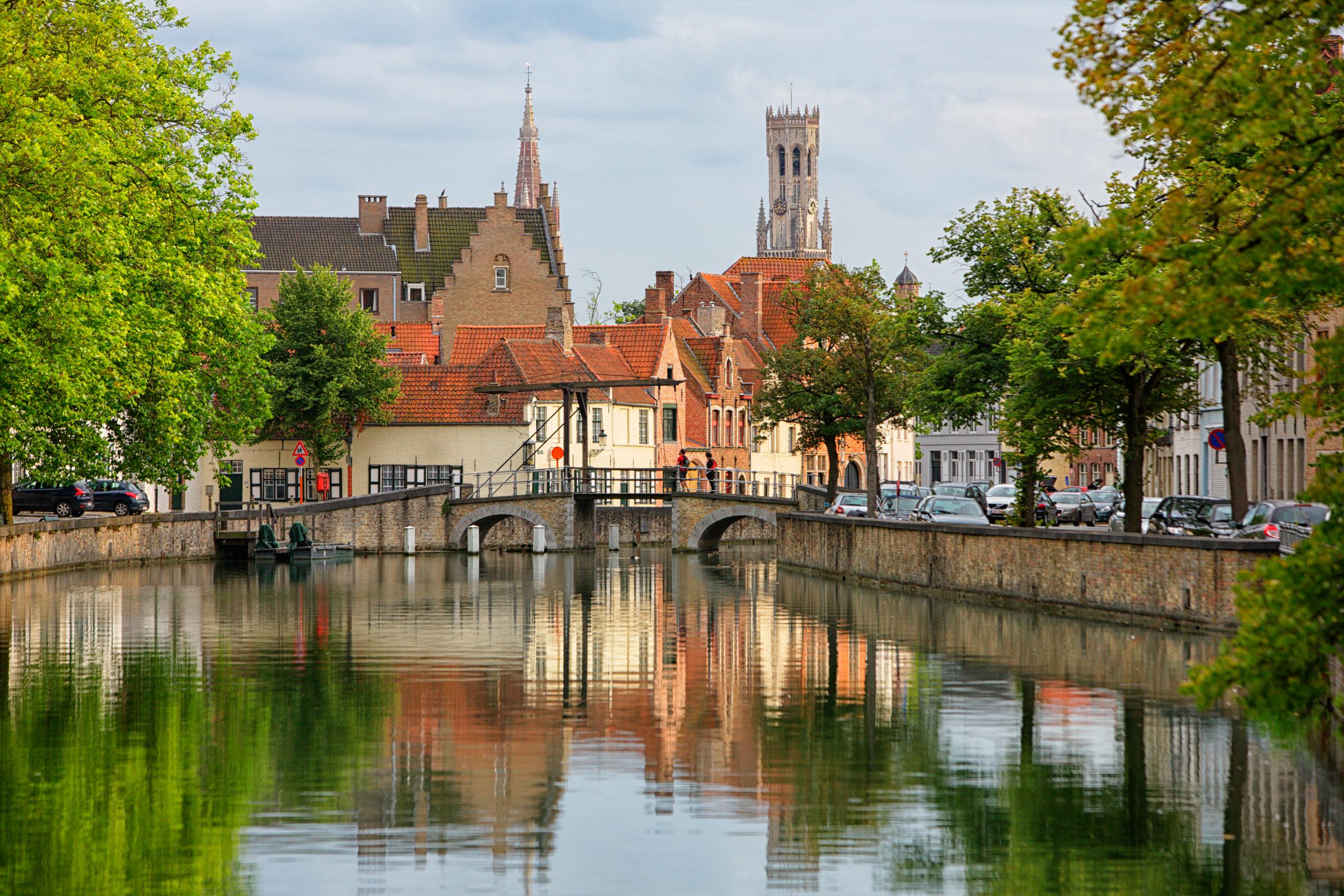
Bruges is a classic medieval city: lined with twisting cobblestone streets, crisscrossed by canals, and towered over by the iconic Belfry of Bruges. One of Europe’s prettiest secrets, the city is the perfect short getaway from the hustle and bustle of London.
The Route: The three-and-a-half hour Eurostar trip costs about $115. You’ll need to change trains in Brussels.
Where to Stay: Don’t be put off by the strange name—the very reasonably priced Hotel Bla Bla in the city center is one of the coolest, friendliest hotels in Bruges.
Where to Eat: Check out Soup, a small restaurant near Bruges’ Market Square that serves beer, panini, and, of course, soup. Cap off the email with a Belgian waffle at the nearby Chez Albert.
What to Do: Climb the Belfry, of course. It’s the city’s most famous sight and the views from the top are nothing short of breathtaking.
Zurich to Vaduz, Liechtenstein
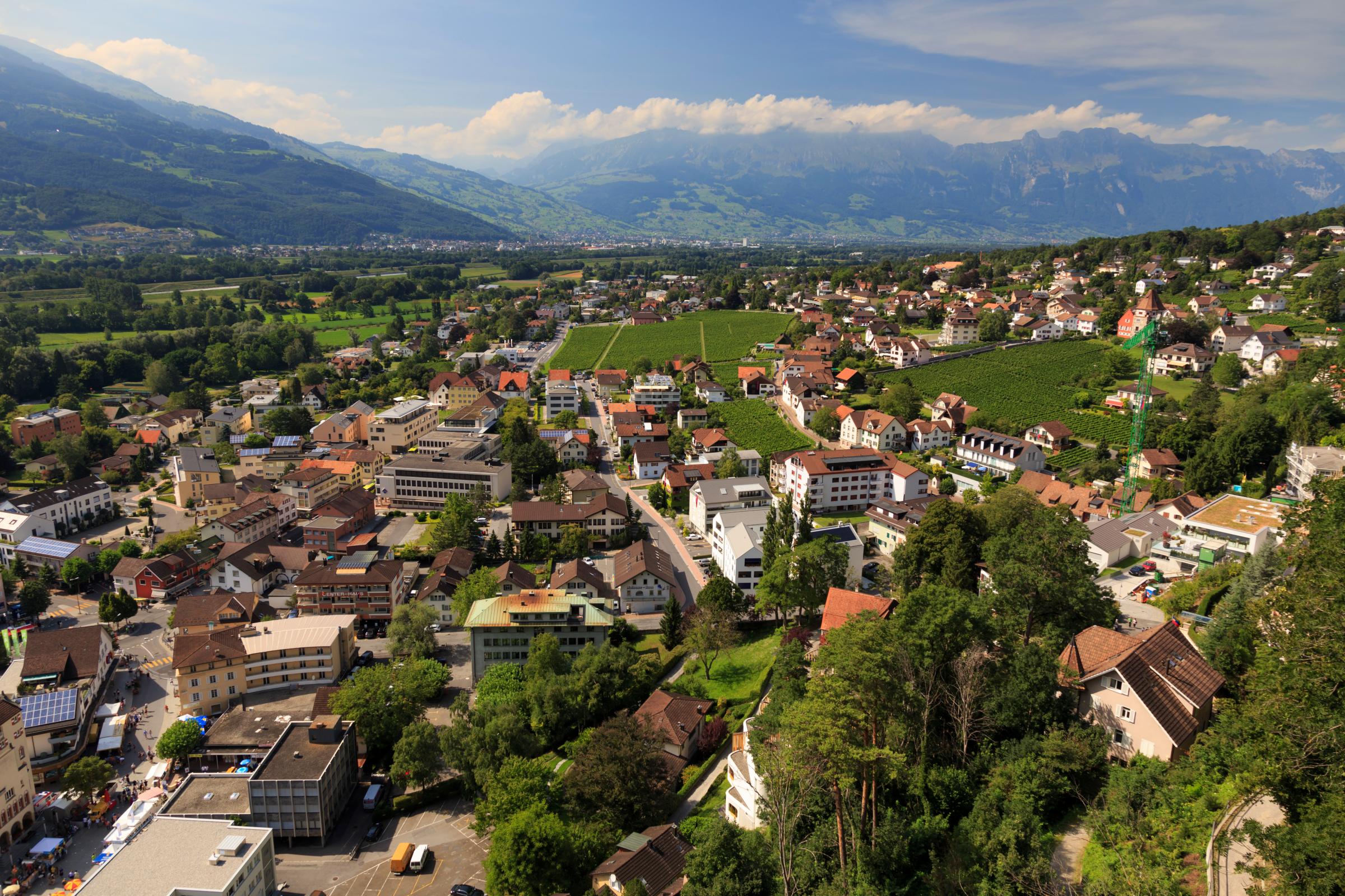
Liechtenstein, with its bizarre history, powerful monarchy, and tiny population, might be one of the strangest countries in Europe, and its Lilliputian capital city (population: 5,000) is an underrated gem for alpine travelers.
The Route: Getting from Zurich to Vaduz takes about 90 minutes. You’ll need to catch a train from Zurich Hauptbahnhof to Sargans, just on the border. From there it’s a short bus ride to Vaduz. Expect to pay around $90 for the whole trip.
Where to Stay: Liechtenstein is one of the few countries left in the world that still takes its monarchy very seriously, so you might as well live like royalty yourself while visiting. And the 29 beautifully appointed rooms and suites at the luxurious, bucolic Parkhotel Sonnenhof are certainly fit for a king.
Where to Eat: You won’t have a better meal in Vaduz than at the Parkhotel Sonnehof’s elegant, Michelin-starred Restaurant Marée.
What to Do: Hike out of town and take in the mountain views on the Grüschaweg Trail, or stop in on the personal cellars of the Prince of Liechtenstein for a wine and whiskey tasting.
Bern to Lausanne, Switzerland

Set on the shores of Lake Geneva, Lausanne is one of Switzerland’s most scenic cities. The surrounding Vaud region is famous for its wines, cuisine, and stunning natural beauty, and, as the largest French-speaking region in Switzerland, provides a French-Swiss cultural experience that nicely complements a visit to the more Germanic-leaning city of Bern.
The Route: Trains run from the center of Bern straight into Lausanne for around $34 each way, and the journey takes about an hour.
Where to Stay: The Hôtel du Port is located in Lausanne’s vibrant marina and has rooms overlooking Lake Geneva.
Where to Eat: Two Michelin stars, a legendary French chef, and some of the finest lake views in town: Anne-Sophie PIC au Beau Rivage Palace is where you want to be.
What to Do: Board La Suisse, an authentic turn-of-the-century paddle steamer, for lunch and a tour of the lake
Vienna to Bratislava, Slovakia
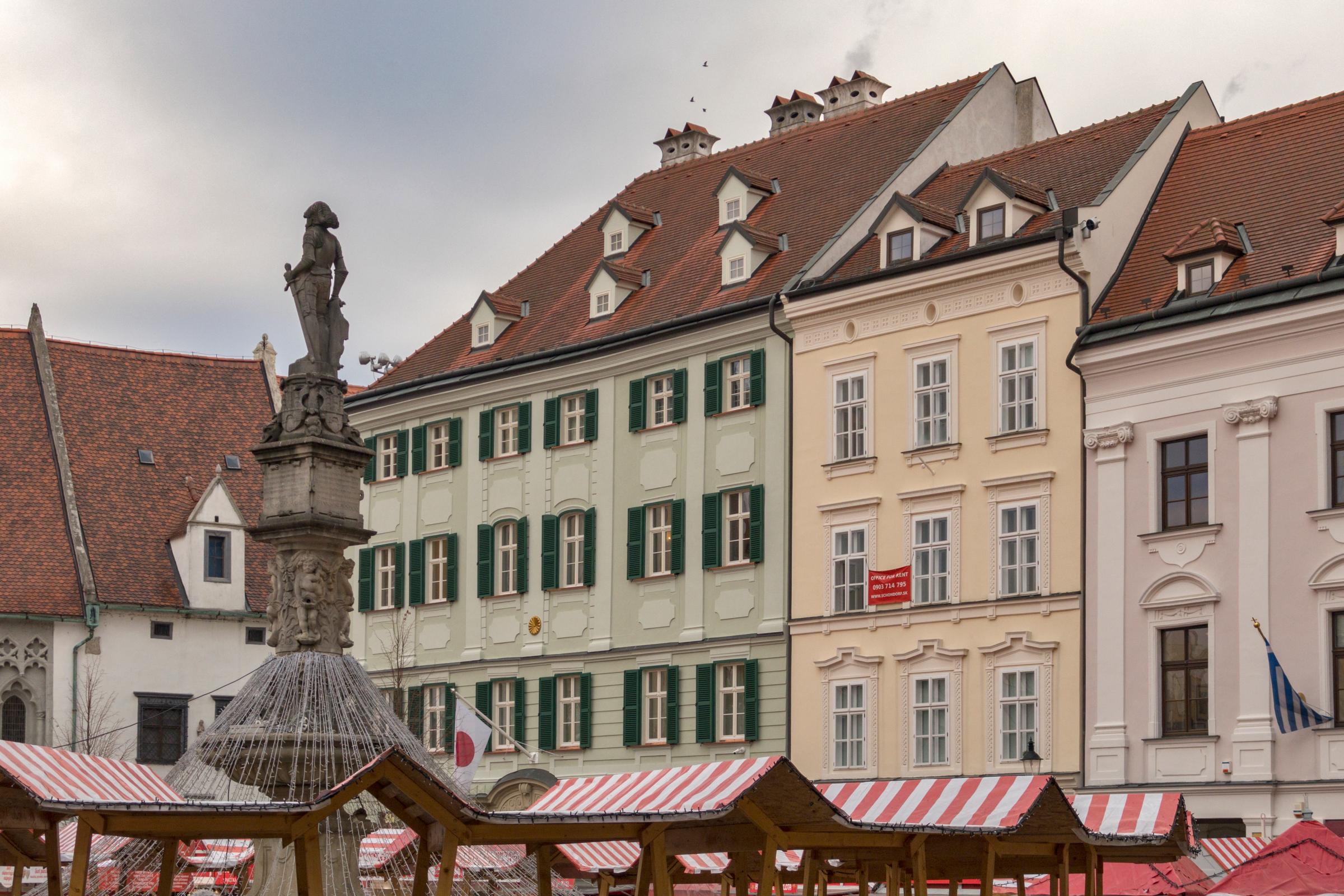
The wonderful thing about Vienna is just how close it is to so many of Europe’s best cities—Prague, Budapest, and Munich being just a few—but Bratislava might well be Vienna’s most exciting and convenient neighbor. The capital of Slovakia, Bratislava is the cultural heart of one of the world’s most underrated countries.
The Route: You can get to Bratislava from Vienna in an hour on the train. The cost? A whopping $14.
Where to Stay: The Hotel Michalská Brána, in the city’s historic center, has an inconspicuous, traditional exterior, but is thoroughly modern on the inside. The city’s most popular bars and clubs are only seconds away, as is the magnificent Bratislava Castle.
Where to Eat: Modra Hviezda does atmospheric Central European dining at a surprisingly low cost, and is frequently ranked as one of the best restaurants in the city. Make sure to try something off of their list of traditional Slovak specialties.
What to Do: It’s worth heading out of the city to take a tour of the surrounding vineyards and wineries (Slovakia, ever the underdog, has a tremendously underrated winemaking industry). And if wine isn’t your thing, the Slovaks aren’t exactly strangers to beer-making either.
Bilbao to Biarritz, France
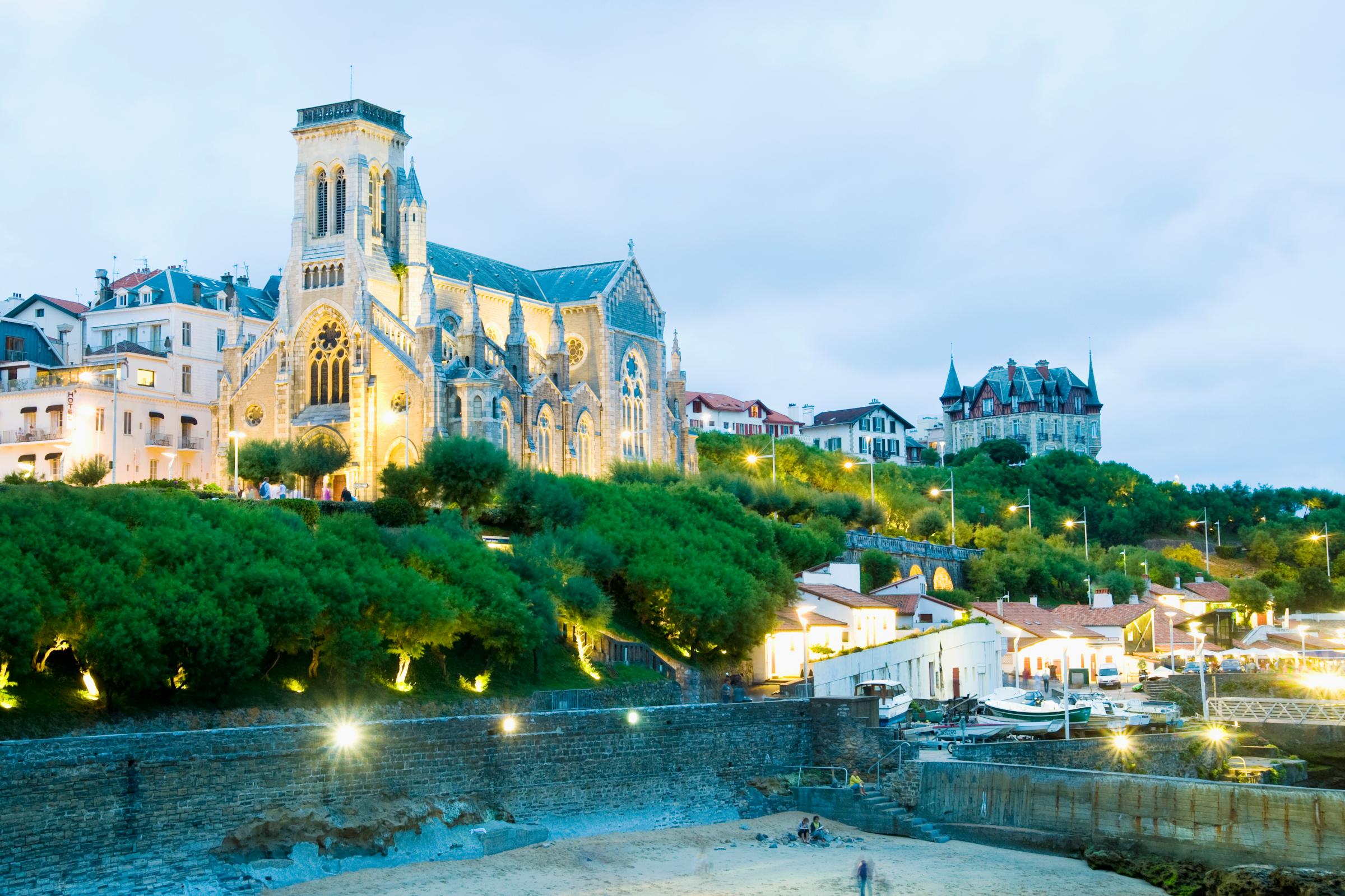
Don’t let the Pyrenees get in your way: any traveler worth their salt who’s near the Spanish-French border should take the chance to hop on over to the country next door. Biarritz, on the Bay of Biscay, is a French surfing town marked by a thriving nightlife and the sort of glitz and glamour you’d normally be hard-pressed to find outside of the French Riviera.
The Route: Local bus companies will sell you a ticket from Bilbao for anywhere between $15-20 each way. The trip should take just under three hours.
Where to Stay: You’re never going to want to be too far away from the seaside while you’re in Biarritz, so book a room at the Hotel l’Ocean, which offers affordable luxury in the city center, only seconds away from the beach.
Where to Eat: Put aside the fine dining and fancy restaurants, and grab a quick meal from the Beach Garden to eat by the water instead.
What to Do: Surf, of course. Biarritz is as good a surfing spot as anywhere else in France or Spain, and the city has a prominent surf culture. If you’re a rookie, don’t panic—the École de Surf Hastea offers lessons and camps throughout the year for surfers at any level.
Amsterdam to Ghent, Belgium
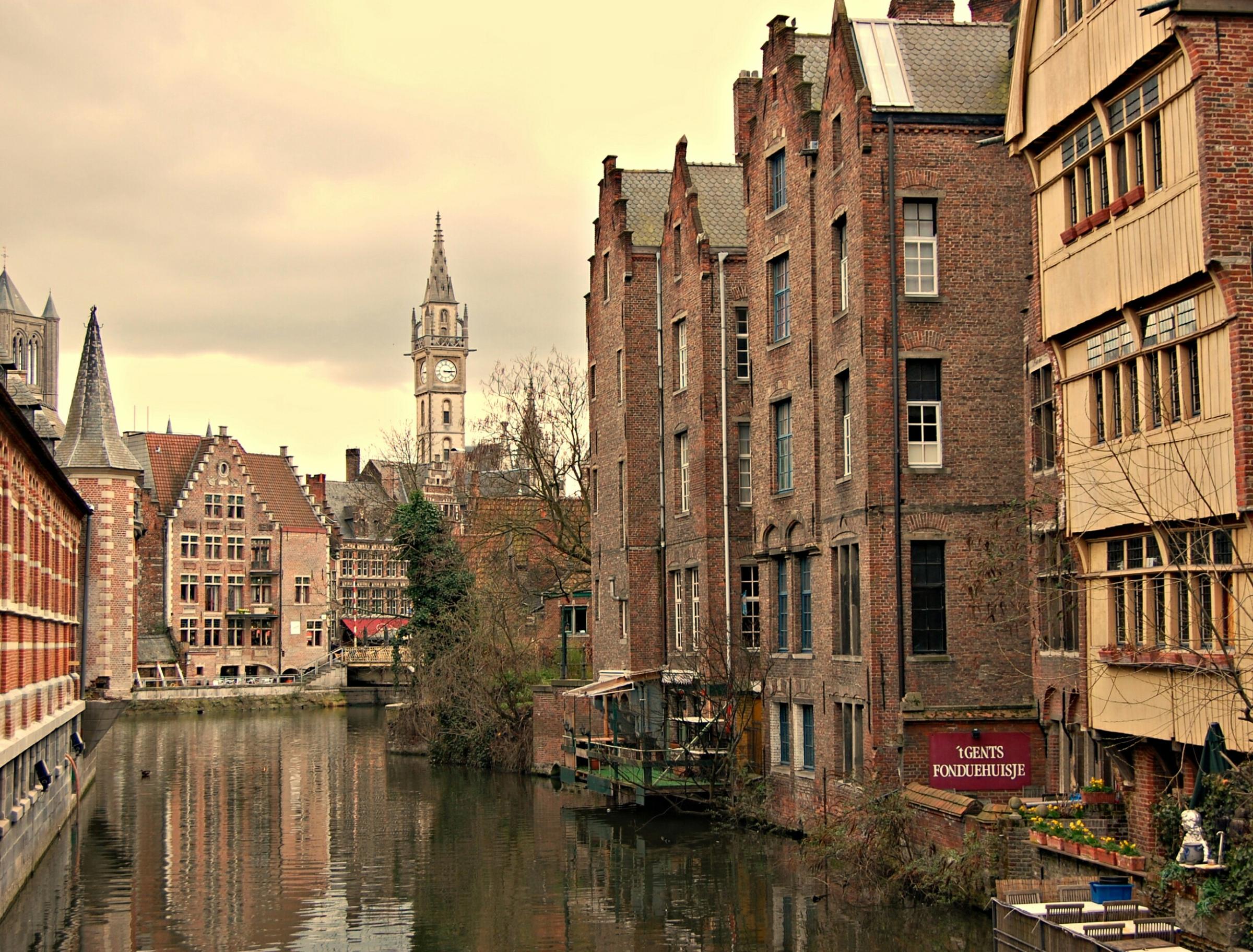
Ghent is obscure enough to enjoy a relaxed, relatively quiet atmosphere, but also entertaining enough (thanks largely to its university and thriving student scene) to keep any errant partiers from Amsterdam happy.
The Route: Traveling via Thalys, a high-speed rail, will take only slightly over two hours, and costs about $40 each way. Intercity Brussels also run trains to Ghent at around $30 for a single ticket, but the journey will take three-and-a-half hours.
Where to Stay: Spend a night or two in the Boatel, a floating hotel in a converted riverboat.
Where to Eat: The Belgians do few things better than steak and frites, and Gillis probably does it best of all.
What to Do: If you’re taking a break from the mile-a-minute Amsterdam nightlife, check out the Museum of Fine Arts to soak up a bit of medieval, Renaissance, and modern culture. Otherwise, head down to Korenmarkt for some of Ghent’s more central bars and pubs, or out towards Blandijnberg for the city’s student nightlife.
Helsinki to Tallinn, Estonia

Tallinn, Estonia’s capital, lies on the southern shores of the Gulf of Finland. Although less well known than its northern counterparts, Tallinn is often regarded as one of the most cultured, developed, and technologically advanced cities in Europe. Perhaps not the best destination if you’re trying to get away from Finland’s biting cold, Tallinn is certainly a must-visit for lovers of the northern reaches of the continent.
The Route: Getting there from Helsinki will require a short trip on a ferry; the Viking Line tends to have the cheapest tickets (from $25 round-trip) and the crossing will take about two hours.
Where to Stay: Set in an elegant, Soviet-era building, My City Hotel is one of Tallinn’s higher-end establishments, but its sumptuous interior and unrivalled location in the city’s Old Town will more than justify the slightly higher price tag.
Where to Eat: Kohvik Moon is only a short distance from the Old Town and serves high-end, modern Russian cuisine at incredibly affordable prices.
What to Do: Tallinn has a long history of producing alcoholic beverages—from beers and vodka to classic Estonian liqueurs. Explore the city’s spirited traditions during a private tasting tour.
Tangier to Tarifa, Spain

Okay, so Tangier isn’t quite Europe, but it’s close enough to count—and how often do you get to go on a quick jaunt over to the continent next door? Tarifa, in the province of Cádiz, near the Strait of Gibraltar, lays claim to some of Spain’s prettiest beaches and is one of the best spots for wind sports in the country.
The Route: You’ll need to get the ferry across, of course. FRS runs a few sailings a day from Tangier Ville to Tarifa. The crossing takes an hour and will set you back around $70 for a round-trip.
Where to Stay: Koala Tarifa is a guesthouse located in the city’s historic center that offers five apartments in 300-year-old, perfectly preserved building.
Where to Eat: Travelers and locals go to Vaca Loca, a small, friendly, and typically Spanish restaurant known for serving steak and grilled meats in a beautiful, traditional setting.
What to Do: Try out kitesurfing (or other wind sports) down at the beach. KitePassion Tarifa offers private lessons for $55 and group lessons for $20 per person.
Lisbon to Cáceres, Spain

Cáceres is a mish-mash of cultures: the city was founded by the Romans, yet it’s dotted with medieval streets and Renaissance palaces and surrounded by Moorish city walls. The Old Town is a UNESCO World Heritage Site, and the whole town itself is not only foodie heaven (it was named the 2015 gastronomy capital of Spain by the Spanish Hospitality Federation), but is also just far enough out of the way to remain relatively tourist-free.
The Route: Since the rail route was shut down, getting to Cáceres from Lisbon takes a while—the bus journey is a five-hour trip. Nonetheless, it’ll cost less than $20 with GoEuro and will take you through some of the most stunning countryside in Iberia.
Where to Stay: The Hotel Parador, which is part of that UNESCO Heritage Old Town, feels more like a palace than a hotel, which probably comes from the fact that it actually is one.
Where to Eat: Cuisine is what Cáceres does best, and Restaurant Javier Martin offers up a sterling tasting menu from one of the freshest and most exciting new chefs in town.
What to Do: Take a walk around the Old Town. In addition to being unspeakably beautiful, the area is home to market stalls and boutique shops selling all the sweets, wines, liqueurs, and street food a traveller could ever want.
This article originally appeared on TravelandLeisure.com
More Must-Reads from TIME
- Why Trump’s Message Worked on Latino Men
- What Trump’s Win Could Mean for Housing
- The 100 Must-Read Books of 2024
- Sleep Doctors Share the 1 Tip That’s Changed Their Lives
- Column: Let’s Bring Back Romance
- What It’s Like to Have Long COVID As a Kid
- FX’s Say Nothing Is the Must-Watch Political Thriller of 2024
- Merle Bombardieri Is Helping People Make the Baby Decision
Contact us at letters@time.com